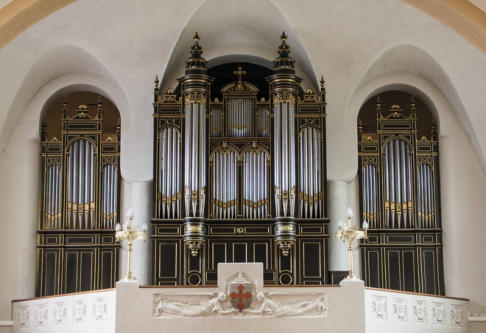


ORGANS OF PARIS © 2024 Vincent Hildebrandt HOME ALL ORGANS
Courbevoie,
Saint-Maurice-
de-Bécon
216 Rue Armand Silvestre, 92600 Courbevoie 1865 - Cavaillé-Coll1912 - Mutin
1976 - Jean Jonet
2015 - Denis Lacorre & Laurent Plet
III/37 - mechanical traction - stoplist


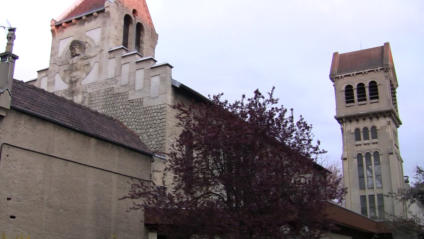
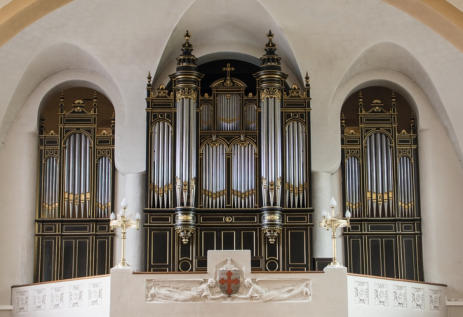
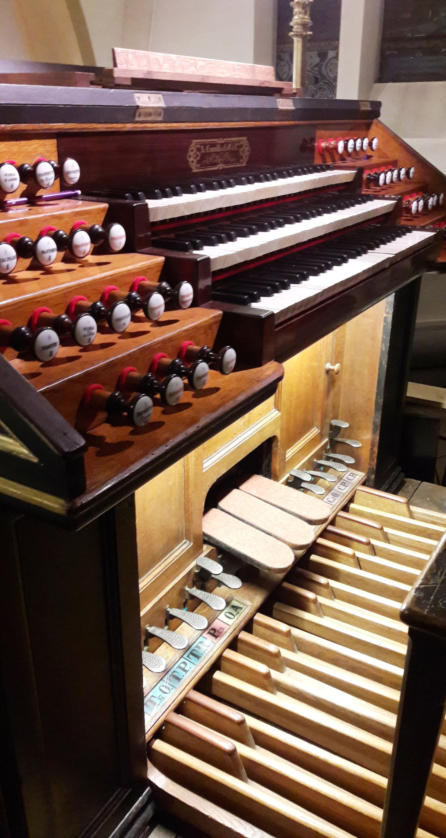

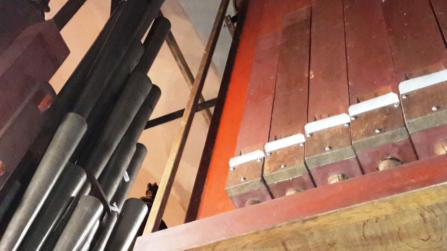
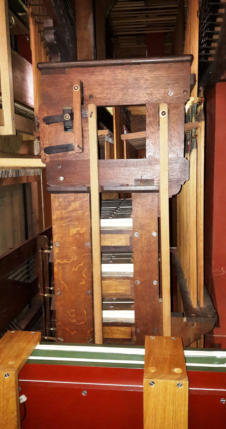
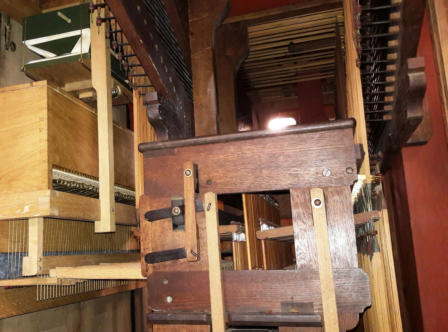
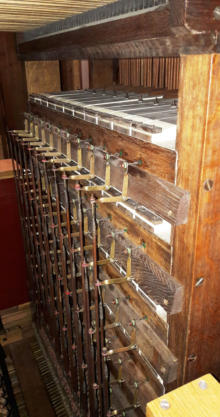
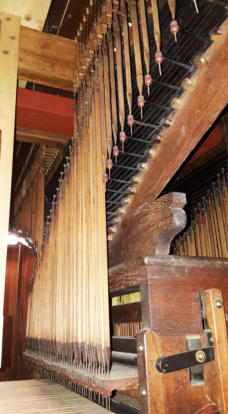
Photos : Victor Weller
The church St Maurice de Bécon was built between
1907 and 1910, designed in het neo-roman style by
the Parisian architect Julien Barber. It has a single
nave and is inspired by the primitive basilicas.
The organ was built in 1865 by Aristide Cavaillé-Coll for
the palatine Chapel of the marquis de Lambertye in
Gerbéviller. Since this instrument was not intended for a
church, Cavaillé-Coll could give free rein to his creativity.
The instrument had a Physharmonica, a stop designed by
the German builder Walcker: a free reed without pipes,
as in a harmonium. There was also a swell box with two
opposed shutters, one opening while the other closes,
creating an effect of moving away from the sound, as in a
German Fernwerck. There were also German influences
in the stoplist, as evidenced by the names of some stops.
Cavaillé-Coll used in this organ for the first time
expression pedals, instead of the spoon like devices used
before.
In 1909, the instrument was bought from the Lambertye
family by the Canon Oudin for the new Church of
Courbevoie and installed by Charles Mutin in 1912. He
moved the swell from the back of the case to the front. At
an unknown date , after 1925, the Physharmonica was
removed. In 1976, the builder Jean Jonet modified the
organ towards a neoclassical style.
In 2017, Denis Lacorre and Laurent Plet completed a
comprehensive restoration, with the aim to restore the
original concept of Cavaillé-Coll. The missing stops were
reconstructed, including the Physharmonica (today called
Aeoline) and moved stops were repositioned to their
original places. All mechanics and the wind supply were
restored and the swell was moved to its original location
in order to regain the balance desired by Cavaillé-Coll. In
addition, the original II-II coupler and ‘tonnerre’ (pédale
d’orage) were reconstructed and the rear side of the
organ was provided with a new case to meet the
conditions in Gerbéviller.
Organiste titulaire
Thomas Monnet & Lucile Dollat
Concerts
Regularly
Masses with organ
Saturday 6.30 PM, Sunday 10.30 PM
Video
Thomas Monnet
Site of the organ
Organs of Paris
Courbevoie,
Saint-Maurice-
de-Bécon
216 Rue Armand Silvestre, 92600 Courbevoie 1865 - Cavaillé-Coll1912 - Mutin
1976 - Jean Jonet
2015 - Denis Lacorre & Laurent Plet
III/37 - mechanical traction - stoplist
ORGANS OF PARIS © 2024 Vincent Hildebrandt ALL ORGANS
Organiste titulaire
Thomas Monnet & Lucile Dollat
Concerts
Regularly
Masses with organ
Saturday 6.30 PM, Sunday 10.30 PM
Video
Thomas Monnet
Site of the organ
The organ was built in 1865 by Aristide Cavaillé-Coll for the
palatine Chapel of the marquis de Lambertye in Gerbéviller.
Since this instrument was not intended for a church, Cavaillé-
Coll could give free rein to his creativity. The instrument had a
Physharmonica, a stop designed by the German builder
Walcker: a free reed without pipes, as in a harmonium. There
was also a swell box with two opposed shutters, one opening
while the other closes, creating an effect of moving away from
the sound, as in a German Fernwerck. There were also
German influences in the stoplist, as evidenced by the names
of some stops. Cavaillé-Coll used in this organ for the first
time expression pedals, instead of the spoon like devices
used before.
In 1909, the instrument was bought from the Lambertye
family by the Canon Oudin for the new Church of Courbevoie
and installed by Charles Mutin in 1912. He moved the swell
from the back of the case to the front. At an unknown date ,
after 1925, the Physharmonica was removed. In 1976, the
builder Jean Jonet modified the organ towards a neoclassical
style.
In 2017, Denis Lacorre and Laurent Plet completed a
comprehensive restoration, with the aim to restore the
original concept of Cavaillé-Coll. The missing stops were
reconstructed, including the Physharmonica (today called
Aeoline) and moved stops were repositioned to their original
places. All mechanics and the wind supply were restored and
the swell was moved to its original location in order to regain
the balance desired by Cavaillé-Coll. In addition, the original
II-II coupler and ‘tonnerre’ (pédale d’orage) were
reconstructed and the rear side of the organ was provided
with a new case to meet the conditions in Gerbéviller.
